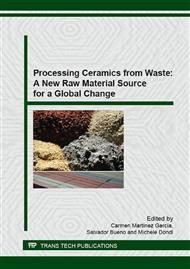p.3
p.11
p.23
p.34
p.42
p.50
p.62
p.75
p.86
Bacterial Induced Cementation Processes and Mycelium Panel Growth from Agricultural Waste
Abstract:
This researching work explores the development of new materials and procedures to tackle the configuration of our built environment through the implementation of low-cost biotechnological processes. Particularly, it focuses on two different researching lines: bacterial induced cementation processes and mycelium panel growth from agricultural waste.The first researching line explores the possibilities that MICP (Microbially Induced Calcite Precipitation) shows to improve the engineering properties of granular structures. MICP uses populations of non-harmful bacteria, such as Sporosarcina pasteurii, able to cement sand, silt, or calcarenite, in a growth medium, amended with urea and dissolved calcium source. This researching is mainly grounded on laboratory work. Its main aim is to find out the best conditions to cultivate populations of cementing bacteria and to achieve suitable proportions of urea, bacteria and calcium chloride, in relation to the weight of sand-like granular samples; to come out with effective cementing solutions. These solutions could be used to improve soil stability, to heal concrete cracks, to build roads and paths, to restore monuments, to transform sand into sandstone, etc.The second researching line consists of obtaining 100% organic and biodegradable thermal insulating structures, growing fungi mycelium on agricultural waste. In order to do that, several fungi species were grown on different kinds of agricultural substrates to find out which combination worked better. Therefore, several mycelium growth tests were carried out inside molds that were previously fabricated using CNC machines, such as laser cutters and digital milling machines. Hence, we grew Lentinula edodes (Shiitake) on wood shavings, Pleurotus ostreatus on pasteurized straw, and Ganoderma lucidum (Rehisi) on dried leaves. Several molds with different shapes and sizes were designed and fabricated to grow mycelium inside them, in order to get different outcomes that might be used for different purposes. Hence, we grew insulating panels to be placed in the core of a wall, membrane-like components to cover inside walls, and even structural components that could be assembled to shape 3D complex structures to divide spaces.The whole project, including both researching lines, means a remarkably innovative proposal since the weaving together of biotechnology and design has been hardly explored for all these purposes. Within that logic, its main goal was to achieve sustainable and eco-friendly operational strategies and materials, which take advantage of living forms of intelligence to generate outcomes that meet our needs, without consuming energy and harming the environment.
Info:
Periodical:
Pages:
42-49
Citation:
Online since:
September 2015
Authors:
Price:
Сopyright:
© 2016 Trans Tech Publications Ltd. All Rights Reserved
Share:
Citation:



